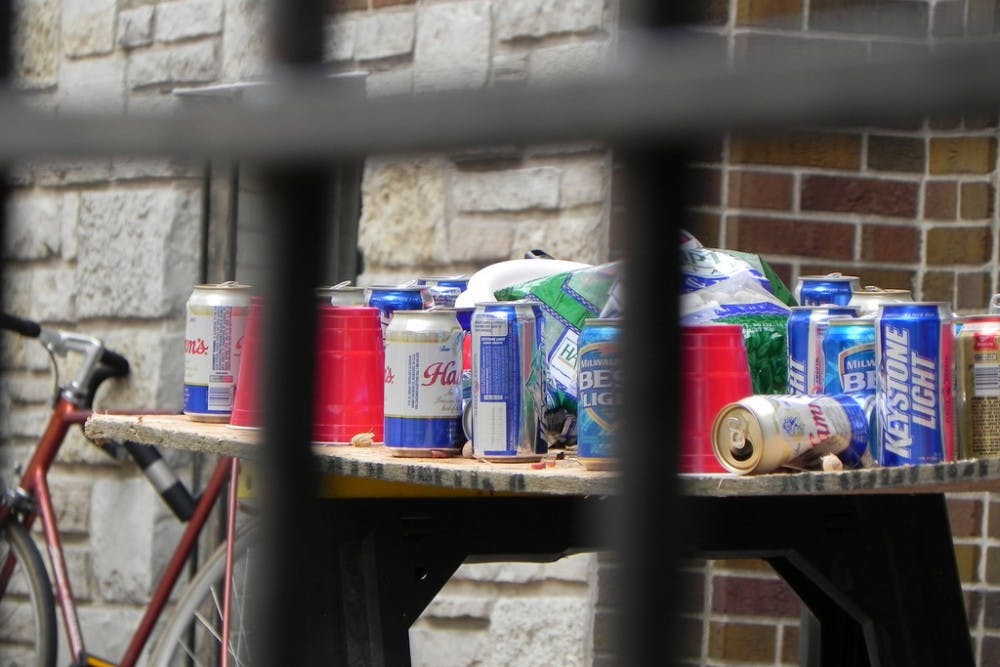
Courtesy of Richard Hurd/Creative Commons
Some Penn students say drinking habits have a lot to do with cultural backgrounds.
College junior Zach Belnavis, a member of Kappa Sigma and also a Jamaican native, believes that there are differences in drinking culture at Penn, which has to do with how students of different cultural backgrounds are exposed to alcohol.
“I would say that for a lot of cultures it's because they’re exposed to atmospheres that are more comfortable and accepting of drinking,” he said.
A 2007 study from the National Institute for Alcohol Abuse and Alcoholism shows that white Americans over the age of 18 are significantly more likely to consume alcohol than minorities. The study also shows that white Americans are the second most likely segment of the population to be considered heavy drinkers, following Native Americans.
College freshman Sydney Morris, who is not affiliated with any Greek or Multicultural Greek Organization, agreed that cultural practices have a lot to do with partying habits. She said most of her partying experience is in the Latin fraternities and said there is a different focus at the multicultural fraternities than at other fraternities.
“I’ve been to the Latin frat and white frats,” Morris said. “The Latin frat is entirely dancing. White frats are less dancing and more sitting around and generally more alcohol.”
Adam Reid, a College sophomore who is not involved with a Greek or MGO, said the major difference in drinking culture between these organizations is that he's “seen a lot more people wasted at white frats."
A Harvard study suggests that students in Greek life may drink more overall than non-Greeks. The study found that while two out of five college students are binge drinkers, four out of five college students involved in Greek organizations are binge drinkers.
Interfraternity Council President Jacob Wallenberg believes this finding can be attributed to the nature and volume of Greek organizations.
"The structure of IFC, MGC and Panhel inevitably has an impact. The sheer amount of chapters, the access to houses where events can be organized and the general size of membership are some factors that come to mind. “ Wallenberg said.
College sophomore Kendall Finlay, a member of Alpha Phi Alpha — an MGO — is not convinced that a difference in drinking cultures exist. "There is no difference in alcohol [consumption]; to speculate that people across different races across campus consume alcohol differently or at different rates is problematic because we are all college students after all. Some drink and some don't," Finlay wrote in an email.
He went on to attribute any possible differences to the structural differences between MGOs and frats under IFC. He wrote that "pure size explains the economic ability for these fraternities to have flexibility in regards to going out culture."
"When you have a pledge class of 30 paying 600 plus in dues every semester, of course you can reserve a club downtown for your formal," Finlay added. "Add in the occasional millionaire students and wealthy alumni and they're set... Multicultural frats are forced to choose from an already minority population and then we see IFC and multicultural somewhat competing for those minority members."
In the end, Belnavis thinks, the drinking trends tend to even themselves out. “This is only really a major difference for like year or two,” he said. “I’d say by junior or senior year, people drink about the same way.”
The Daily Pennsylvanian is an independent, student-run newspaper. Please consider making a donation to support the coverage that shapes the University. Your generosity ensures a future of strong journalism at Penn.
DonatePlease note All comments are eligible for publication in The Daily Pennsylvanian.




